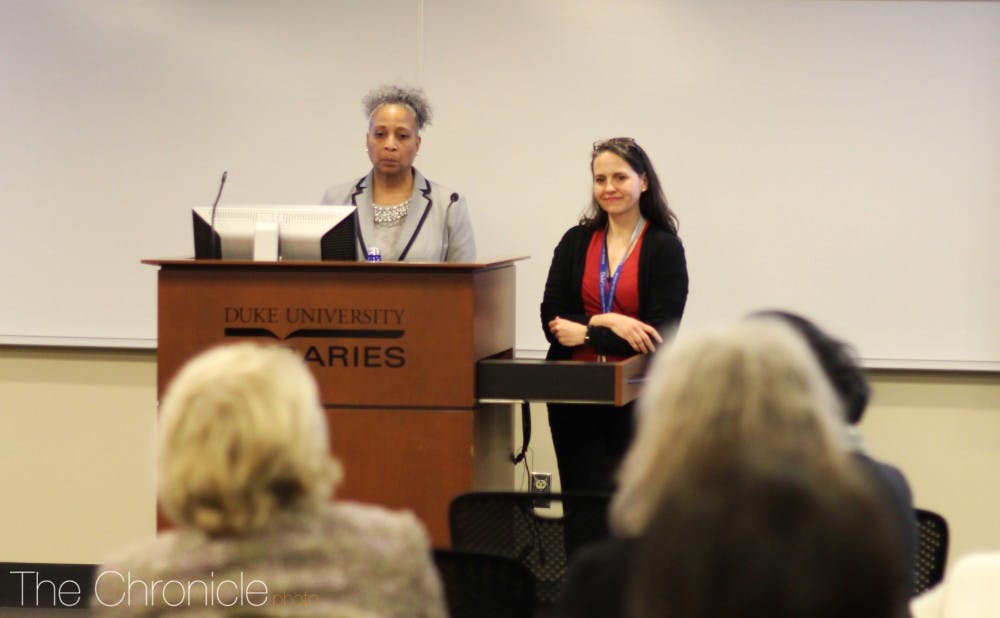The Arts and Sciences Council discussed creating a bridge program between Trinity College of Arts and Sciences and School of Nursing.
Students who pursue the program—capped at five per year—would take four courses in the School of Nursing during their senior year, and the Council voted to allow these courses to count toward the 34 credits necessary to graduate. The program is designed to allow Trinity students to complete an accelerated bachelor of science degree in nursing and a standard bachelor’s degree from Trinity in five years.
“Our School of Nursing is No. 1 in the country, and it helps to facilitate the opportunity of our undergrads to take advantage of this as a great resource,” said Alyssa Perz, an academic dean and lecturer of biology.
This timetable would help students on financial aid complete both degrees, Perz added, as federal financial aid can expire after five years.
She explained that the new program would come on the heels of several other “4 + 1” programs at Duke, such as those sponsored by the Nicholas School of the Environment and Pratt School of Engineering. What makes the nursing bridge program distinctive, however, is that it would confer two bachelor’s degrees instead of a bachelor’s and master’s degree.
The bridge program can only accommodate a limited number of students because the nursing school will receive less income as a result, Perz added.
“One of the things that’s going on through this bridge is the nursing school is giving up that tuition, letting Trinity keep the tuition the undergraduates are paying during those first four years and basically allowing them to take those nursing school courses without compensation,” she said.
Several faculty members in attendance questioned elements of the proposal.
Ron Grunwald, director of undergraduate studies in biology, expressed his support for the program, but said he hoped the school administration approves the School of Nursing courses for undergraduates through a proper procedure. Grunwald recommended that the Courses Committee vet the nursing school classes and add them to the undergraduate catalog before a vote to approve the program is taken.
Perz mentioned that she spoke with Jesse Summers, chair of the Courses Committee, who told her that the committee’s main responsibility is to approve course codes for Trinity classes.
Christina Williams, professor of psychology and neuroscience, raised concerns about a potential overlap in curriculum between the School of Nursing courses and other undergraduate classes.
Perz responded that students would be applying for this program early enough in their undergraduate career that they likely would not have taken an advanced course that would overlap with a nursing school class.
Several faculty members questioned whether continuing to approve pre-professional programs would erode the values of a liberal arts education. However, Perz pointed out that students on the pre-medical track at Duke take 12-16 courses for medical school, whereas the nursing school bridge program has only four prerequisite classes.
In other business
The Arts and Sciences Council approved a report by the ad-hoc Classroom Space and Infrastructure Committee, which presented its findings at previous council meetings.
Representatives from Program II—Duke’s individualized degree program—were invited to speak during the meeting about the program.
“Program II students are generally among the most high-achieving students at Duke,” said Rachael Murphey-Brown, an academic dean and director of Program II.
Get The Chronicle straight to your inbox
Signup for our weekly newsletter. Cancel at any time.

